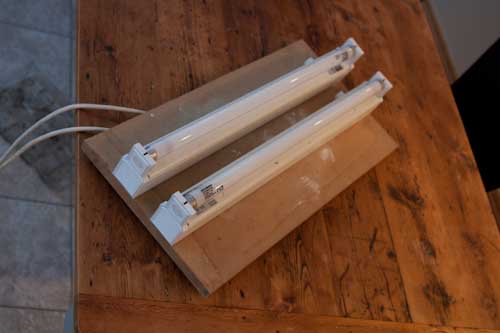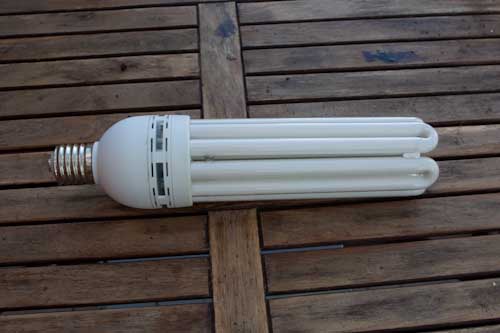One of the main problems that chili growers in Europe and North America face is the lack of light. Chili and pepper plants love light and will thrive the more they receive. One great way to get a head start on the growing season, is through the use of artificial or grow lights. In fact if you choose the correct set up you can even grow your chillies indoors all season. There can be a certain stigma attached to grow lights as many people associate them with the illegal growing of marijuana.
There are three main types of grow lighting commonly used by growers to produce chilli’s, all of which are discussed below.
Normal Fluorescent Tube Lighting
This is perhaps the simplest and cheapest form of lighting hat can be used to aid chilli production. Many growers simply want to give their pepper plants a head start on the growing season. Bearing in mind that plants aren’t usually put outside until the chance of the last frost has passed, many do not plant their seeds until March or April. Many growers try to get a head start by planting their chili seeds as early as December or January and use artificial lighting to help their plant survive until summer arrives and they can be moved outside. Assuming this is your aim then standard fluorescent tube lighting may be the best option.

The benefits of standard tube lights are that they are very cheap, readily available and produce very little heat. If opting for this type of lighting always try to get the “cool white” variety of bulbs as they produce even less heat. They best set up is to buy a couple of light units and mount them on a piece of mdf board about 15cm apart. The lights should be kept about 10cm above the tops of your chilli seedlings to prevent any overheating. As with any of the lighting units discussed here it can be beneficial to have an electric fan directed over the plants both to help keep them cool and also to help strengthen them up ready for when they go outside.
The downside about this normal fluorescent lighting is that the spectrum of light the tubes produce is only really suitable for seedlings. As a result this type of lighting is unsuitable if you want to raise your chilli plants through to the fruiting stage under lights. If that is the case you should consider one of the options below.
Compact Fluorescent Lighting (CFL)
CFLs are a natural step up from regular fluorescent tube lighting. In broad terms they offer smaller units that pack more intense light in relation to their size. Two main types exists (blue and red) in a variety of different wattages from anything between 125W and 300W. The blue spectrum lamps are the most popular and like standard fluorescent tubes are only really of benefit during the seedling and early stage of chilli plant growth. Moving up the scale slightly are the red spectrum of CFLs. They are better performing during the latter stages of chilli growth and are just about viable if trying to grow your plants indoors completely. However in reality if you plan to complete all of the growing season indoors you are advised to spend a bit more and opt for a HID system.

Again using a fan with these types of grow lights will be of benefit to strengthen the plants and prevent overheating from the lights. Many people have different views on the number of hours you should have the lights on for. Somewhere in the region of 14-18 hours a day seems about the most common. The easiest way to achieve this is to obtain a regular plug timer from your local hardware store. Just be careful to have the correct fuse strength in the timer if you are running more than one lighting unit from the same plug socket.
High Intensity Discharge Lighting (HID)
As with CFL lights HID lighting are also available in blue (Metal Halide – MH) and red (High Pressure Sodium – HPS) spectrums. However, they are generally a lot more powerful than CFL lights. This extra power enables you to move the lights further away from the plants, allowing you to get more pepper plants under one light. In addition these are the kind of lights you should opt for if you aim to replace natural sunlight all together and are attempting to grow your chillies completely indoors.
Metal Halide lamps are the best choice if you are looking to produce a large crop of chilli plants and want to get them as mature as possible before planting them outside at the start of the summer. However as with fluorescent lighting the metal halides struggle to provide the correct spectrums of light that is required to get you chilli plants flowering and fruiting. For this you’ll need a high pressure sodium set up.
HPS lights perform badly during the early stages f growth but superbly during the flowering and fruiting stages. These kinds of set-ups are where you can start to spend serious amounts of money. Their higher power means (generally over 400W) means that you’ll need to purchase special ballasts and timer switches with higher spec fuses and lighting control units. HID lights produce a lot more heat than fluorescents so using fans, and even better ventilation is required if you want to avoid scorching you plants. If opting for this choice it is recommended you speak to a specialist lighting retailer who will be able to advise the best set-up for your needs.





